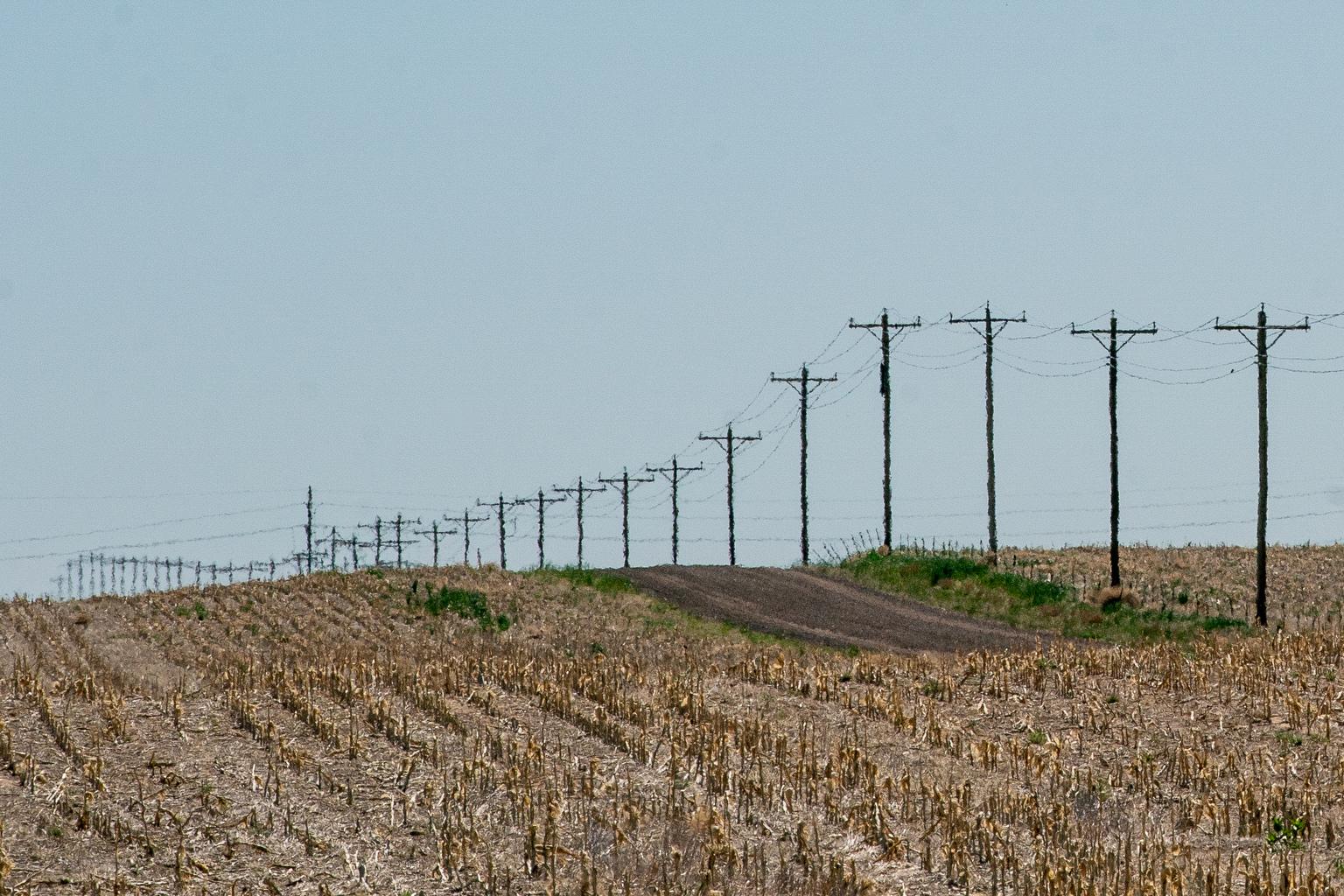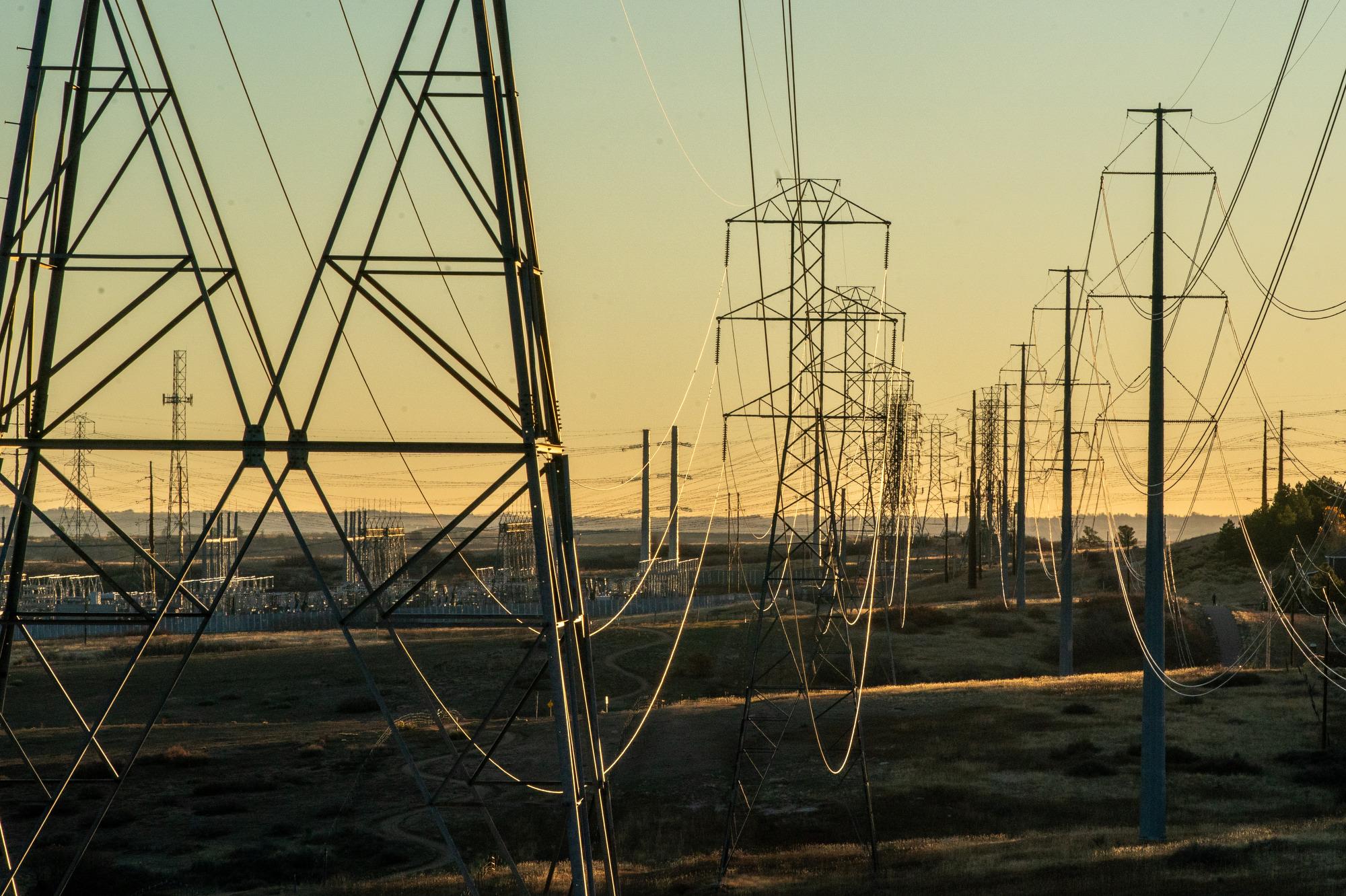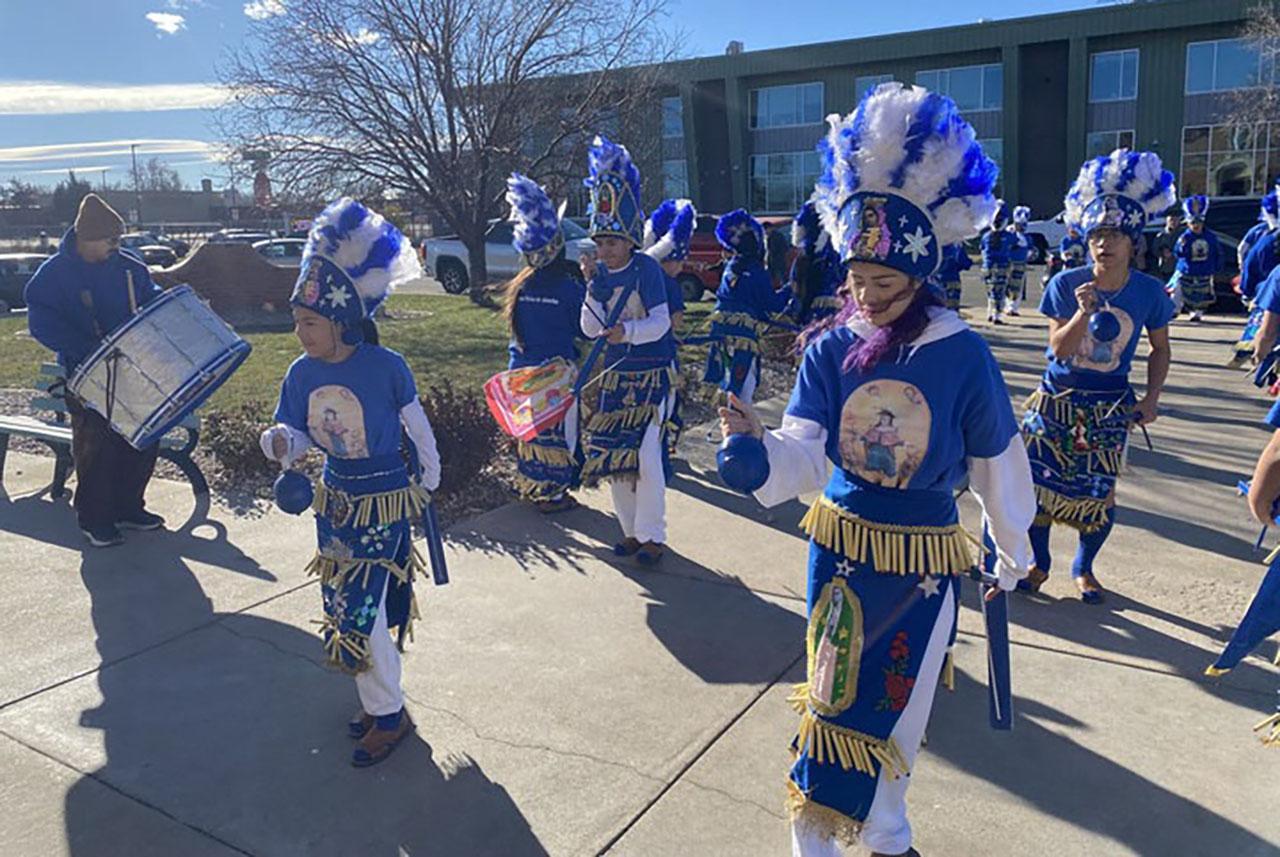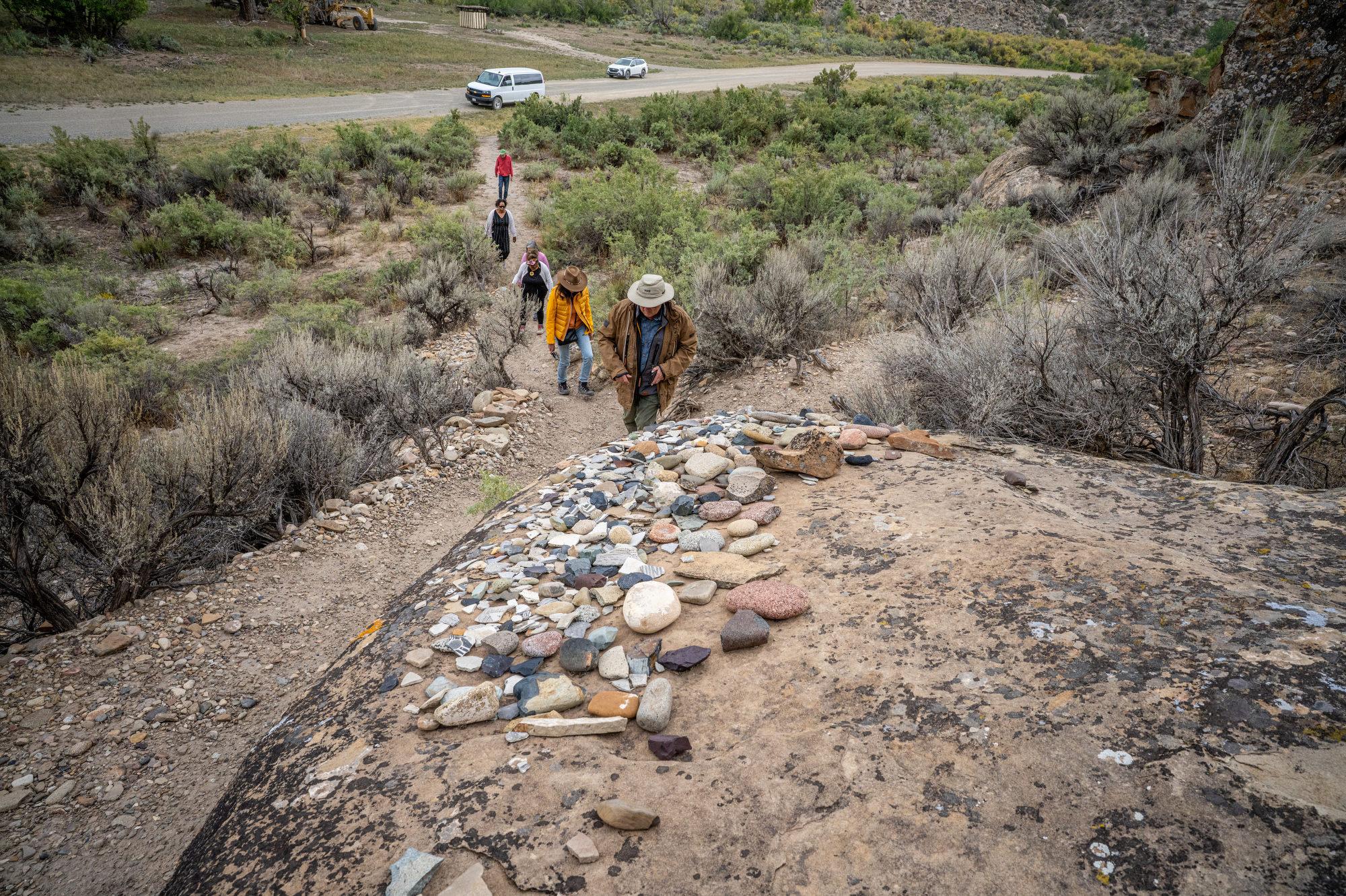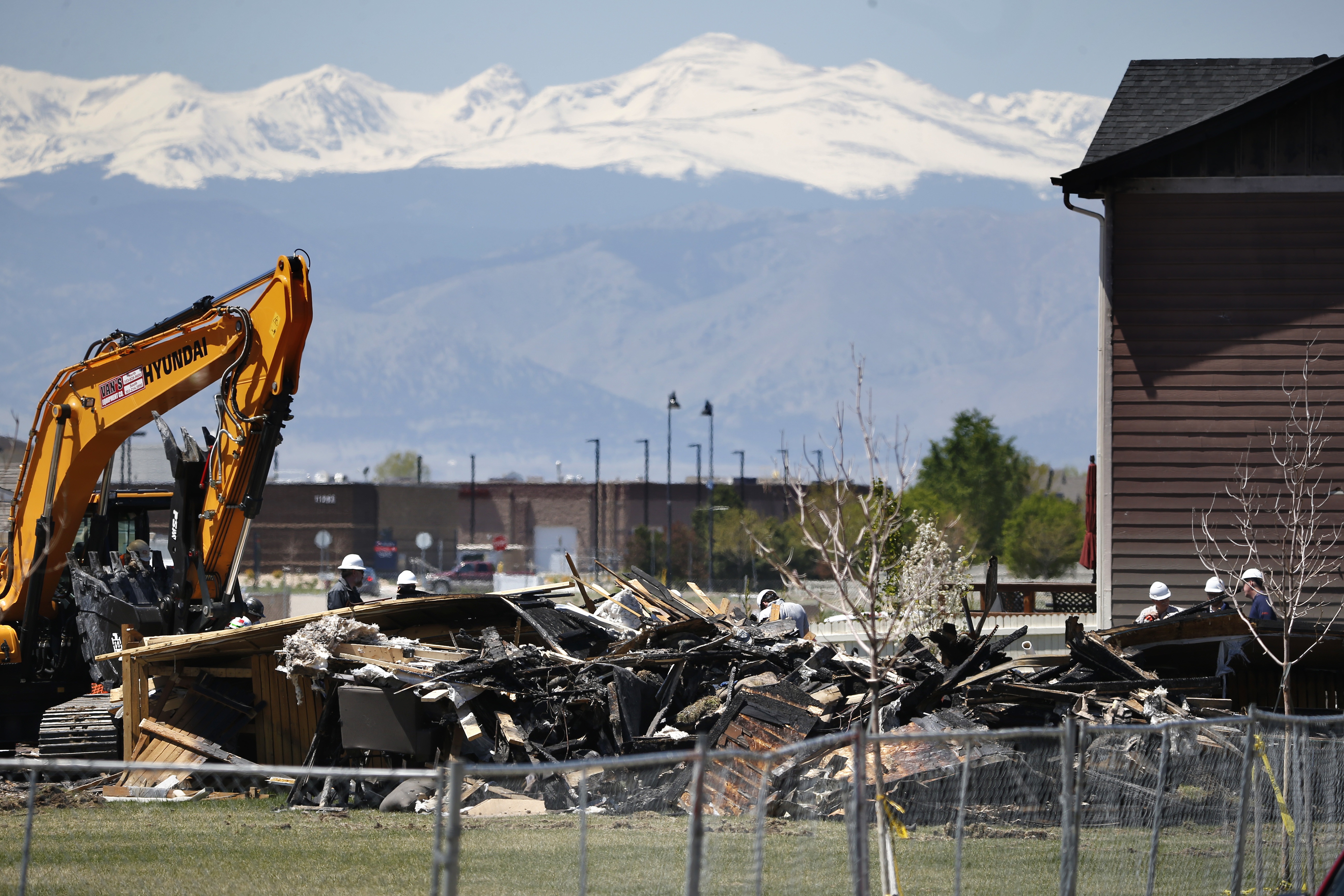
Colorado's top oil and gas regulator says Gov. John Hickenlooper's administration will propose new industry regulations soon, including rules covering flowlines that carry fluids from wells. Inspectors blamed a leaking line for an April 17 explosion that killed two people in Firestone, north of Denver.
Related:
- New Study Looks At Frequency Of Oil And Gas Explosions In Colorado
- Governor Calls For Statewide Inspection Of Oil and Gas Wells
- Firestone: Gov. Cautions Against Heavier Local Oil, Gas Regulations
"I think that the governor and his staff are still focused on Firestone, and ensuring public safety. I don't want to get out in front of the governor, but I think we've probably identified a couple of changes to those flow line rules," Lepore told Colorado Matters. "I think we will seek to maybe increase the staffing," and a request for an increase in the agency's budget.
Hickenlooper ordered the oil and gas companies to inspect those wells after Firestone. Matt Lepore, director of the Colorado Oil and Gas Conservation Commission, which regulates the industry, said the companies inspected roughly 22,000 wells, and 124,000 flowlines -- 430 of the wells failed inspection.
Lepore told Colorado Matters his office will also ask the legislature for more staffers to handle inspections and other work. The state assigned about 45 inspectors, engineers and other experts to work with companies on the thousands of inspections he said. State staffers were on hand for about 14 percent of actual well inspections.
The Firestone explosion has also heightened interest from local governments that want more control over where wells are located. The Colorado Supreme Court ruled last year that state law trumps local measures to limit drilling, but several cities and citizens groups are moving ahead with measures that would challenge that. Many of those proposals are aimed at extending the distance between homes and wells beyond the 500-foot minimum required by the state.
The City of Thornton, north of Denver, is considering a proposal to extend that requirement to 750 feet. Lepore's office recently wrote a letter to Thornton officials warning that state law would preempt that regulation. Lepore said the letter was meant to encourage further talks between the city and his office. "Most likely it's a wait and see and if Thornton ... were to actually say to an operator 'we will not allow you, we will not issue you the local permit that you need because you are not 750 feet away, then we'll visit that scenario when we get there."
Click on the audio link to hear the full conversation. Read a transcript below.
Transcript:
Nathan Heffel: This is Colorado Matters from CPR News. I'm Nathan Heffel. The battle over the safety of Colorado's oil and gas wells, and who should regulate the industry, continues. In April, an explosion that killed two people in Firestone, north of Denver, was blamed on a leak in a line from a well. After that, Governor John Hickenlooper ordered the oil and gas companies to inspect thousands of wells and lines statewide. I'm joined now by Matt Lepore, Director of the Colorado Oil & Gas Conservation Commission; the agency regulates the industry, and he joins me from his office in Denver. Director, welcome to the program. Matt Lepore: Thank you very much. NH: The oil and gas companies say they’ve identified and inspected thousands of wells and flow lines, those are the smaller underground pipes at active and inactive drill sites across Colorado. How many of those lines were found to be leaking or pose a safety risk? ML: The number of leaking flow lines is approximately 400, and those are lines that failed an integrity test. So part of the project here was to identify the beginning point of every flow line segment, and the endpoint of every flow line segment. What happened at Firestone was that there was a flow line connected at a well, and the endpoint of that flow line was not connected. So, identify beginning point, endpoint, and then pressure test that line to make sure it holds fluids. So when I talk about 430-odd wells that failed that integrity test, that's what we're talking about. If I can add, out of about 22-23,000 wells that were inspected, and about 124,000 flow lines. NH: Do people need to be concerned about these wells? Should they be concerned, especially in the aftermath of Firestone? ML: The wells have risks associated with them. Should they be concerned about another Firestone incident? I think not greatly. The steps we took in the immediate aftermath really were intended to get a handle on the two most immediate things that we saw in the aftermath of Firestone. One I've touched on, which is this idea that there's a beginning point and an ending point. The second is that, at Firestone, the line was supposed to have been abandoned. What we found was that they had left, coming up out of the ground, what we call the riser, so that's the rigid piece of pipe that comes up out of the ground. And when they abandoned the line, rather than remove that riser, the left it there. You connect to the well, there's pressure on that line, if something's going through that line it goes out in the environment, which is what happened at Firestone. To eliminate that chance we made the operators go back and cut off all of those old risers below ground. NH: How many, was this in conjunction with the oil and gas producers themselves? Were they doing these inspections on their own? Were there members of your agency working with them? ML: We did work with them, we worked closely with them. We embedded our field inspectors, or our environmental inspectors, or our engineers were working side by side with operators, we assigned them to a specific operator. As part of that, being embedded, they carried out detailed inspections, and as far as that goes, we were able to witness about 14% of the wells, that 23-24,000 wells, and about 12% of the different locations that the operators worked on. NH: So 23-24%, that's around 3,200 wells. How many inspectors do you have overall with your agency? ML: Our field inspection unit is 30 folks. In this case we augmented those 30 with some of our engineering and some of our environmental staff; rough number is about 45 people were in the field. NH: But, do you feel that 30 inspectors are adequate, given the number of wells in the state? ML: It's a recurring question. We looked at six other states, and Colorado fell right in the middle, in terms of numbers of active wells per inspectors. It's all something of a resource allocation question. NH: Now, would the state be safer if there were more inspectors? ML: I guess I'll answer you this way. It's really hard to measure things that haven't happened, because COGCC inspectors have done their job, you know? We know there will be spills, we want to minimize spills, we want to have spills promptly reported and promptly cleaned up. I think overall, and I know after April 17th this is harder to say, and maybe harder to hear, but overall the industry has a pretty good track record. NH: And April 17th was the date of the Firestone explosion, correct? ML: That's right. NH: We hear rumblings that there may be additional recommendations for regulating the oil and gas industry coming from the Hickenlooper administration in the next couple of weeks. Does the COGCC, the Colorado Oil & Gas Conservation Commission, know what type of regulations are coming down the line? And are they intended for the flow line issue? ML: Yeah, I think that the Governor and his staff are still focused on Firestone, and ensuring public safety. I don't want to get out in front of the Governor, but I think we've probably identified a couple of changes to those flow line rules. I think we will seek to maybe increase the staffing. NH: And does that mean going to the state legislature and asking for an increase in your budget? ML: Yes, yes it does. But, we would propose to do that. NH: The governor also said after Firestone that he wanted all of the state's flow lines mapped, so residents and local governments know where they actually are. Has that been done? ML: The notice to operators did not result in a map, if you think of a map in the sense of, "I can trace the path of the flow line from its beginning point to its ending point." We wanted whatever work we did to be done quickly, and we knew there was no way that the mapping could be done in the time frame we were looking at. We are still talking about mapping flow lines. It's important to understand we're talking about, number one, a lot of flow lines, as you can see from the numbers that were inspected; number two, a lot of data to be reported by a lot of different operators. NH: Would it provide useful information to people, or is it simply too complicated to figure out? ML: The group that this information is useful and most vital for are people who dig into the ground; foundations of homes, other utilities, etc. So having a place where we can have the best information available to those excavators is important and valuable, and I think that's the direction to move. NH: So that data would be less for the homeowners, but more for the contractors or those constructing the homes. ML: Yeah, and I certainly understand the potential residents' desire to understand what's in their neighborhood, but I think if we satisfy the first issue there, that information, some form of that information would be available to the residents too. NH: You're listening to Colorado Matters from CPR News. I'm Nathan Heffel. I'm speaking with Matt Lepore. He's director of the Colorado Oil and Gas Conservation Commission. A fatal explosion last April in Firestone heightened concerns about the safety of oil and gas wells in Colorado, and the debate over how much control local governments should have over where they're located. Beyond the immediate safety concern that came up with Firestone, we often hear concerns that drilling is simply too close to where people live and work. How far can the state really go in balancing these two interests? ML: Well, I think you put your finger on kind of the core of what we've been grappling with, really, during my tenure for the last five years. It is, at some level, a classic kind of land use conflict. We have adopted lots of rules over the last five years to try to address that conflict, but we're certainly not at the endpoint. There is a role for local governments, and local governments continue to kind of explore what they can do under their powers. One of the things we've promoted for local governments is long-range planning with operators. When that developer comes in and says, "This'd be a nice place for a subdivision, and I want to build 600 homes here," local governments have got to be aware that there is a mineral estate underneath the ground that likely is severed from the surface, that somebody is going to come along one day wanting to develop those resources. NH: I want to talk briefly about the distance the state requires between new wells and existing buildings. Currently it's 1,000 feet for big facilities like hospitals and schools, and 500 feet for a home. We're going to talk in a minute about how local governments can regulate where new homes can go, but I want to touch on this balance of power. Tell us, in your opinion, how that balance between state and local governments actually plays out. ML: The simplest way to say it is that local governments have land use authority, and the state has the authority to regulate the technical aspects of oil and gas. Another way to say that is "down hole issues". But the down hole does extend to where wells are located, so we talk about the spacing of wells and the number of wells, because that does directly tie to getting the resources out of the ground. So I think that's the point at which the question is the most murky. Local governments have asked, and others have asked, "If I can regulate where the marijuana outlet is, why can't I regulate the well goes? If I can have a residential zone and an industrial zone, why can't I make the oil and gas be in the industrial zone?" And the short answer to that question is that those other uses don't have an attached property right. When somebody acquires minerals, part of what they acquire is the right to access the minerals from the surface above the minerals. With specific respect to distance between wells and homes, we regulate the oil and gas industry, not the home builders. So we can say to the operators, "You may not get closer than X to an existing building." We cannot say to the home builder, "You may not get closer than Y to that existing well." That part does rest with the local governments. NH: But there's still the rub there. I mean, a lot of communities are still trying to limit oil and gas development. A citizens' group in Broomfield wants to raise the distance to a quarter-mile between wells and homes. The town of Erie is changing how it deals with violations of its public health code by oil and gas companies. And the city of Thornton, north of Denver, is working on a proposal to increase the distance between wells and homes from 500 feet to 750 feet. Matt, your office, via the Colorado Attorney General, recently sent a letter to Thornton warning that state law will preempt their proposed regulations in several ways. Will the COGCC take the city of Thornton to court, or any city to court, over this issue? ML: It's absolutely the last choice, last resort and the letter to Thornton really said we do have concerns. Some of these issues have already been to the court, all the way to the Supreme Court and we think are fairly clear and well decided. But the letter said let's continue to talk about this. That's really what the letter said. Before we would decide to go to court, if that were where we were, I think we are interested in seeing how cities, counties, now apply these rules once they've adopted them. So it's one thing to have a rule on the book that says the setback is 750 feet, which is greater than the state's 500. It's another thing to deny a permit on that basis. So most likely it's a wait and see and if Thornton in this example, were to actually say to an operator, "We will not allow you, we will not issue you the local permit that you need because you are not 750 feet away," then we'll visit that scenario when we get there. NH: Thanks for joining us, Matt. ML: Thank you for having me. |

